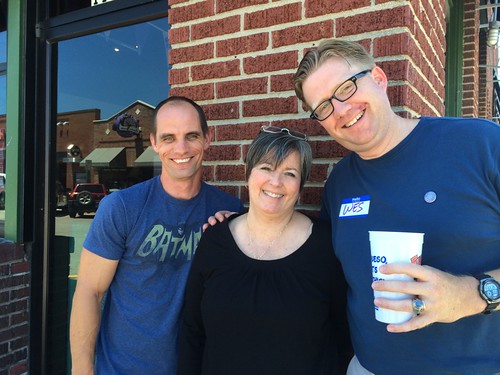Learn From Mike Wesch How to Create Better Videos for Students
Author: Wesley Fryer
Go to Source
The COVID-19 pandemic has pushed school leaders, teachers, students and parents in the United States to respond in different ways to “shelter in place / shelter at home” mandates. It has pushed many K-12 teachers into the role of “emergency remote learning” instructors, even if the courses they teach were never intended to be “online” or “distance learning” courses, and irrespective of whether or not those instructors had past experiences as either students or teachers in distance learning courses. Some larger public K-12 school districts responded to this pandemic by creating “packet-based” (non-digital) lessons for students, and either asked teachers to reach out to students via analog technologies (telephone calls) or even prohibited teachers from offering interactive, digital learning opportunities, since not all students had requisite digital devices or home connectivity to participate in those lessons. Some private schools, like the one for which my wife and I now teach, have offered a wide and rich array of “remote learning” interactive opportunities for students, including both “synchronous” as well as “asynchronous” lessons. As we look forward to the uncertainties of the 2020-21 academic year and our slowly “reopening economy,” it seems likely teachers and students will need to continue engaging in different forms of hybrid, remote learning interactions, which will include the sharing of pre-recorded (asynchronously shared) videos.
To support our faculty during this time of “emergency remote learning” which started in March 2020, I created and shared a variety of instructional support modules about a variety of topics, applicable for students of different ages in a variety of subjects. These included options for creating:
- No Edit Videos
- Screencast Videos
- Narrated Slideshows
- Edited Videos including multiple clips or modified / amplified audio tracks
No matter how much experience you’ve had creating videos in the past, each of us can always learn new techniques and strategies to make better videos. In this way, videography is like writing. Every writer can further develop their craft, and benefit from the opportunity to learn from mentors with more experience and expertise.
Dr. Michael Wesch, (@mwesch) a professor of cultural anthropology at Kansas State University, is one of the best videography using teachers I know and have personally met. Mike has been publishing a series of fantastic videos on his YouTube channel in a series he’s titled, “Teaching Without Walls,” which I highly commend. Two of the videos I watched this past week included “The Mixtape: Deep Teaching Online beyond Zoom” (8 min, 45 sec) and “Make Super Simple Videos for Teaching Online: 5 Tips & 5 Reasons to Get On Camera” (11 min, 45 sec). Mike is a phenomenally gifted teacher as well as videographer, and ANYONE regardless of prior experiences with video creation can learn multiple, practical tips from him in both these tutorials.
One of the most important things Mike emphasizes in his videos is to BE YOURSELF, to PERSONALIZE the interactive learning you provide to your students via video, and to also INVITE YOUR STUDENTS to create and share videos to build both relationships and classroom community. Whether you are teaching “littles” in primary or elementary school, university students, or students of any age in between, these video techniques are valuable and relevant.
I’ve been blessed to be able to learn “in person” from Mike at several conferences in the past, but I’ve learned just as much or even more from the videos he’s shared online over the years. I’ve blogged about many of these learning takeaways, and videos or podcasts of the presentations Mike has shared that I’ve learned from are still online:
- Michael Wesch on Seymour Papert and Constructionism (Aug 2014)
- Moving Students From Knowledgeable to Knowledge-ABLE: Michael Wesch at TEDxKC (Aug 2014)
- Michael Wesch on Creating Learners which Question and Live in a World of Constant Wonder (Feb 2013)
- Podcast384: Michael Wesch at Heartland eLearning 2011 (Oct 2011)
- Michael Wesch Keynote at 2011 Heartland eLearning Conference (March 2011)
Mike is a superb educational mentor because of the pedagogy (instructional strategies) he models, lives and ‘exudes’ in his teaching, as well as the powerful, relational connections he creates with his students and encourages others to create. As we continue to move forward in our various educational contexts during the neo-coronavirus pandemic, we each need to take initiative to keep improving and sharpening our digital and instructional skills. If you’re not already, follow Mike Wesch both on YouTube and on Twitter (@mwesch). If you learn something from him, let him know.
We live in an incredibly powerful and potentially transformative era for learning. Being able to learn for free, from “masters of teaching and learning” like Mike Wesch, irrespective of where and when you read this post in space and time, is a specific example of that power and potential. Go forth and learn videography tips from Mike Wesch! I’ve authorized your extended use of YouTube for this instructional purpose!
If you enjoyed this post and found it useful, consider subscribing to Wes’ free, weekly newsletter. Generally Wes shares a new edition on Monday mornings, and it includes a TIP, a TOOL, a TEXT (article to read) and a TUTORIAL video. You can also check out past editions of Wes’ newsletter online free!
Did you know Wes has published several eBooks and “eBook singles?” 1 of them is available free! Check them out! Also visit Wes’ subscription-based tutorial VIDEO library supporting technology integrating teachers worldwide!
MORE WAYS TO LEARN WITH WES: Do you use a smartphone or tablet? Subscribe to Wes’ free magazine “iReading” on Flipboard! Follow Dr. Wesley Fryer on Twitter (@wfryer), Facebook and Google+. Also “like” Wes’ Facebook page for “Speed of Creativity Learning“. Don’t miss Wesley’s latest technology integration project, “Show With Media: What Do You Want to CREATE Today?“

